Ruby Buying Guide: How to Choose the Perfect Ruby
Introduction
Rubies, with their rich red color and historical significance, are among the most sought-after gemstones in the world. Whether you're buying a ruby for yourself or as a gift, understanding the intricacies of ruby quality, value, and authenticity is crucial. This comprehensive guide will walk you through everything you need to know to make an informed purchase, from understanding the 4Cs of rubies to tips on choosing the perfect stone and ensuring you get the best value for your money.Understanding the 4Cs of Rubies
Just like diamonds, rubies are evaluated based on the 4Cs: Color, Cut, Clarity, and Carat weight. Each of these factors plays a significant role in determining the quality and value of the ruby you choose.Color
Color is the most important factor when evaluating rubies. The finest rubies display a pure, vibrant red to slightly purplish-red color. This is often referred to as "pigeon's blood" red and is highly prized. When assessing color, consider the hue, tone, and saturation:
Hue: The actual color of the ruby. The best rubies have a primary red hue with minimal secondary colors like orange or purple.
Tone: The lightness or darkness of the color. The most desirable rubies have a medium to medium-dark tone.
- **Saturation:** The intensity or purity of the color. Highly saturated rubies with vivid red color are the most valuable.
Cut
The cut of a ruby affects its brilliance and overall appearance. Unlike diamonds, rubies are not graded for cut quality, but a well-cut ruby will display the best possible color and light reflection. Common cuts for rubies include oval, cushion, and round, but you may also find unique shapes like hearts or marquise cuts. When evaluating cut, look for a ruby that has a balanced shape, symmetrical facets, and no visible window (a pale area where light passes through).
Clarity
Clarity refers to the presence of inclusions or imperfections within the ruby. While some inclusions are expected and acceptable, they should not detract from the ruby's beauty. The best rubies have few visible inclusions. Rubies with eye-clean clarity, meaning no inclusions are visible to the naked eye, are rare and highly valued. However, it’s important to note that some inclusions can actually enhance the ruby’s value, such as rutile silk, which can cause a desirable star effect known as asterism.
Carat Weight
Carat weight measures the size of the ruby. Larger rubies are rare and significantly more expensive. However, size should not be the only consideration. A smaller ruby with exceptional color and clarity can be more valuable than a larger ruby with poor color and many inclusions. When choosing a ruby, consider how the size will affect its appearance in the setting you have in mind.
Origin and Treatment
Origin
The origin of a ruby can significantly impact its value. Rubies from certain locations are more prized due to their superior color and quality. Key ruby sources include:
Myanmar (Burma): Known for producing the finest rubies with intense red color and strong fluorescence. Burmese rubies are often referred to as the benchmark for quality.
Mozambique: Emerging as a significant source of high-quality rubies with rich red colors.
Thailand: Produces rubies with darker, more garnet-like hues.
Sri Lanka (Ceylon): Known for producing lighter, pinkish-red rubies.
Treatment
Most rubies on the market undergo some form of treatment to enhance their color and clarity. The most common treatments include:
Heat Treatment: A standard practice to improve color and clarity. Heat-treated rubies are widely accepted in the market, but untreated rubies are rarer and more valuable.
Fracture Filling: Involves filling surface-reaching fractures with a glass-like substance to improve appearance. These rubies are less valuable and require special care.
Flux Healing: Similar to fracture filling but uses a flux to heal fractures during the heating process. These rubies retain more value than fracture-filled stones but are still less valuable than untreated or simply heat-treated rubies.
Always ask for a certification from a reputable gemological laboratory that details any treatments the ruby has undergone.
Choosing the Right Ruby for You
Setting a Budget
Determining your budget is a crucial first step. Rubies vary widely in price, and knowing your budget will help you narrow down your choices. Consider what aspects are most important to you—whether it's size, color, origin, or overall quality.
Matching the Ruby to the Occasion
The occasion can also guide your purchase. For example:
Engagement Rings: Look for rubies with excellent color and clarity. A well-cut ruby that complements the design of the ring can make a stunning and unique alternative to a diamond.
Anniversaries and Birthdays: Consider the recipient's personal style. Smaller rubies with excellent quality set in elegant designs can make meaningful gifts.
Investment: If you're buying a ruby as an investment, prioritize color and origin. Burmese rubies with vivid red color and minimal treatment are considered the best investment pieces.
Understanding Certification
Certification from a reputable gemological laboratory is essential when buying a ruby. Certificates provide an unbiased assessment of the ruby's quality, including its color, clarity, carat weight, and any treatments it has undergone. Reputable laboratories include the Gemological Institute of America (GIA), the American Gemological Laboratories (AGL), and the Gübelin Gem Lab.
Working with a Trusted Dealer
Purchasing from a reputable dealer ensures you are getting a high-quality, authentic ruby. Trusted dealers will provide detailed information about the ruby's characteristics and certification. They should also offer a return policy and guarantee to protect your investment.
Caring for Your Ruby
To maintain your ruby's beauty and value, proper care is essential.
Cleaning
Clean your ruby regularly using warm soapy water and a soft brush. Avoid harsh chemicals or ultrasonic cleaners, especially if the ruby has undergone fracture filling. Rinse thoroughly and dry with a soft cloth.
Storage
Store your ruby jewelry separately from other gemstones to prevent scratches. Use a soft pouch or a lined jewelry box to keep your ruby safe.
Regular Maintenance
Have your ruby jewelry inspected by a professional jeweler at least once a year. Check the settings to ensure the ruby is secure, and have any necessary repairs done promptly.
Conclusion
Buying a ruby is a significant investment and a decision that should be made with care and knowledge. By understanding the 4Cs, the importance of origin and treatment, and how to choose the right ruby for your needs, you can confidently purchase a gem that will bring joy and value for years to come.
At Gandhara Gems, we take pride in offering premium, 100% authentic rubies and other gemstones. As a certified gemstone dealer, we ensure that every piece in our collection meets the highest standards of quality and authenticity. Plus, we offer free international shipping on orders over $120, making it easier than ever to add a touch of luxury to your life. Explore our collection today and find the perfect ruby that speaks to your heart.
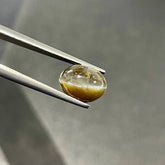
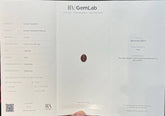
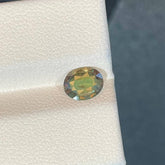
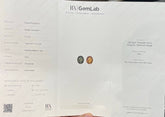
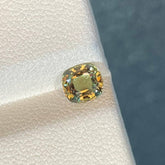
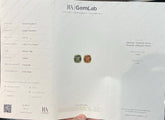
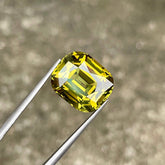
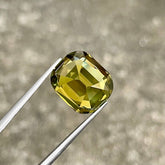
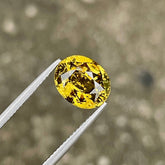
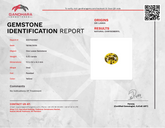
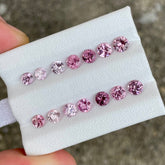

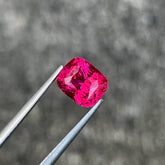



Leave a comment
Please note, comments need to be approved before they are published.